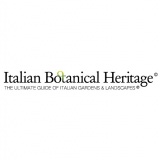
 Italian Botanical Heritage
Italian Botanical Heritage
Italian gardens and parks: S'Abba Frisca Park-museum
- WTI Magazine #156 Oct 22, 2022
-

 Italian Botanical Heritage
Italian Botanical Heritage
The privately owned museum is located in Dorgali, within a park full of waters fed by the spring "S'Abba frisca" (in Italian “acqua fresca”, as to say fresh water). The main theme of the park-museum is summarized in two itineraries: naturalistic and ethnographic.
The itinerary begins with the presentation of plant species: narrow-leafed bonewort, coconut junipers, phoenix junipers, carob trees, laurel trees, viburnums, tamarisks, lilacs, holm oaks, medicinal plants, thyme, peppermint, oregano, vegetables, jujube.
This is followed by workplaces, equipment and traditional agro-pastoral dwellings: the cuìle, a typical goatherd's hut made of basalt blocks and a conical juniper roof, with an interior equipped with a hearth and furnishings for milk processing. the farmer's courtyard, with the asinine grindstone, ox cart, plow and other tools. the storehouse of supplies, with cork silos for grain storage, measures and various trappings for pack animals, ropes and brands. the blacksmith's corner, with a 19th-century bellows, forge, various equipment and the machine for shoeing oxen.
Then we move on to the fossil showcase and plants: ancient ones (Taxus baccata, terebinth, holly) and dyeing plants (walnut, holm oak, phillyrea, alder, heather, bramble, daphne gnidium), the centuries-old olive tree, mulberry trees attesting to the tradition of silkworm breeding in Dorgali, domestic pine, thuias and elms.
Along the way, we come to the stone washhouse, with cast-iron pump, tools for preparing lye and laundry vessels. The next room houses various sections: a reconstruction of two 19th-century bedrooms with oak-beamed and planked ceilings, complete with period furnishings and linens. the tools for wool processing, with two ancient looms, textiles, everyday clothing and festive costumes. a 19th-century buggy, a collection of wheels, musical instruments, the tools for processing wine and oil, and the corner of medicines from medicinal plants. The last room is "sa coghina 'e coghere," with the oven and equipment for making carasau bread. A path of dwarf palms, myrtles, strawberry trees, cysts, mastic trees, wild olive trees and rowan trees alternating with traditional stone troughs follows. Oleanders of various colors and Arizonan cypresses close the itinerary.
The two itineraries intertwine to signify the existing balance between man and nature: use of medicinal plants, fruits, barks and whatever else folk wisdom has deemed useful for survival.